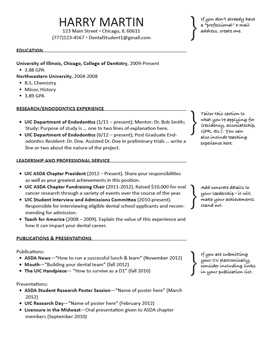 Similar to a resume, a curriculum vitae (CV) provides a summary of your experience and skills and includes your education, job, research and community service experience, membership and leadership roles in organizations, awards, publications and presentations. Where as resumes are recommended at one page, CVs are typically longer – at least two to three pages.
Similar to a resume, a curriculum vitae (CV) provides a summary of your experience and skills and includes your education, job, research and community service experience, membership and leadership roles in organizations, awards, publications and presentations. Where as resumes are recommended at one page, CVs are typically longer – at least two to three pages.
It takes an employer only 5 seconds to form an impression about your CV, so make those seconds count. Use the guidelines below to draft your CV. Need more help? Download this sample.
Tips for writing a good CV:
- Use bullet points. A CV should be a quick snapshot of your history of work and education. Keep it concise.
- Put the most important information first. You’ll want to list your work and education experience in chronological order. Make your path from student to dentist very clear and intentional by organizing your CV in the way you want it read. But for sections such as skills or organizations you’re active in, list the most important ones first.
- Remove older work experiences, like the summer job you held when you were 17. Unless it has to do with dentistry, leave it out.
- Use white space to break up heavy areas of text to make it easier to read and more visually pleasing.
- Use easy-to-read fonts (like the one in the sample, Calibri).
- Use numbers to back up your achievements. If you were fundraising chair, total the amount raised while you held the position. This puts your achievement into perspective.
- No hobbies. Unless you are 100 percent sure that a hobby will support your candidacy, leave it off. Hobbies may come up in an interview, but don’t waste precious page space in your CV talking about your kickball team.
- No jargon or slang.
- Keep your CV to 2-3 pages.
- Never lie on your resume. Be sure to double-check your facts and dates.
Don’t forget to include …
- Any shadowing experience you’ve done while in school.
- Publications you’ve contributed to such as Contour or your chapter newsletter.
- Positions you’ve held in your ASDA chapter or at a national level. Also include what you did in that position (raised $10,000 as fundraising chair, etc.).
- Professional associations you belong to (remember that all ASDA predoctoral members are also members of the ADA).
- Awards and recognition (such as a Gold Crown Award).
- Speaking and presentation experience.
- Outreach trips and volunteer work.